Solar batteries & storage
A huge step towards energy independence, solar batteries let you store up power for when you really need it and support the grid at peak times for a profit.
Adding battery storage minimises your reliance on the grid, reduces the money you put in your energy supplier’s pocket and allows you to help the grid become more efficient while putting more money in your own pocket. So what should you look out for when choosing a system? Below we list the questions you need to ask before making a decision.
The 6 ‘Watts?’ of Solar Storage
1. What’s the ‘useable’ capacity?
Capacity is the amount of energy in kWh (units) that a battery can store. Batteries should never be drained completely. However, some are misleadingly sold quoting ‘total’ capacity. Check what’s being stated. ‘Useable capacity’ is the figure you need to know. Though Tesla Powerwall is 14kWh, it’s sold as 13.5kWh, it’s useable capacity. It will never fully discharge to prevent damage to the battery cells.
2. What are ‘cycles’?
A cycle is one complete discharge and one complete charge. In reality it doesn’t happen like that. A battery may only discharge 25%, then recharge 25%. This would be 1/4 of a cycle. So you need to know how many cycles a battery is warrantied for. Only then can you work out how many kWhs (units of electric) your battery will deliver over its warrantied lifetime.
3. What capacity do I need?
Like Solar PV, customer desires affect the answer. Planning an EV? A larger battery can keep the house running and charge your EV overnight. Grid trading: larger battery capacity means more charging on cheap rate and more to sell back to the grid at peak rate. For high power devices larger batteries have higher output and will not be damaged by higher demand. Naked Solar can model everything to help you decide by using PV Sol software.
4. What’s Charge/Discharge power?
Some battery storage systems only deliver 800w (watts) of power. No good if you want a cup of tea (your kettle needs 2000 watts). Likewise, if you’re generating 4kW but the battery can only take on 3kW then 1kW will be heading to the grid, wasting your precious free energy.
So it’s essential that you check the power output before you buy, otherwise you may find yourself drawing a lot of energy from the grid even though you have energy in your battery.
5. What’s the price per kWh?
As you’ll see from the table below, there are many storage solutions at varying prices. Checking the price/kWh of storage capacity is fair and accurate way to compare different systems. What’s the right number of kWh for your property? That depends on you. The more kWhs you have, the more you can reduce your bills and take advantage of ‘Time of Use’ tariffs that are starting to emerge on the energy supply market. These allow charging on cheap rate and selling back to the grid at higher rate periods. The greater the storage, the more you can sell.
6. What about power cuts?
Most systems are designed just for storage. However, some offer backup capability to provide power when there’s a powercut. Two things to consider.
- To prevent damage to your battery or appliances some of your circuits may need to be removed from the backed up circuits.
- You may want to consider a larger storage capacity to keep some power in reserve.
If backup is essential, let us know and we’ll design some bespoke solutions for you to choose from.
At Naked, we ask these questions for our customers every day.
Compare Solar Batteries
Use the table below to compare some of the battery systems available on the market. This information is for guidance only, it should be very close, but check with Naked Solar or the manufacturer for latest info before making your final decision. Remember that Domestic Solar Storage Batteries are 0% VAT too!
| Charge/Discharge in kW | Storage capacity (kWh) | Useable capacity (kWh) | Cycles warrantied | Installation price | £/kWh of storage capacity | Warranty | Powercut cover | AC/DC Coupled | Response time sec | Grid Trading | Weather Responsive | |
|---|---|---|---|---|---|---|---|---|---|---|---|---|
| Tesla Powerwall 2 | 5.0 | 13.5 | 13.5 | Unlimited | £8309 | £615 | 10 years | Included | AC | 0.2 | Yes | Yes |
| Tesla Powerwall 3 | 3.68-11.5 | 13.5 | 13.5 | Unlimited | £TBC | £TBC | 10 years | Included | AC or DC | 0.2 | Yes | Yes |
| SolarEdge Home Battery (excluding inverter) | 5.0 | 10.3 | 9.7 | Unlimited | £7518 | £775 | 10 Years | Additional cost | DC | Yes | No | |
| GivEnergy All In One 13.5kWh | 6.0 | 13.5 | 13.5 | TBC | £8917 | £661 | 12 years (requires 3 x chargeable health checks) | Included | AC | 6 | Yes | Subscription required |
| GivEnergy AC 9.5kWh | 3.0 | 9.5 | 9.5 | Unlimited | £6748 | £710 | 12 years (requires 3 x chargeable health checks) | Additional cost | AC (DC available too) | 5-10 | Yes | Subscription required |
| Sonnen 10 - 11kWh | 4.6 | 11 | 10 | 10000 | £9670 | £967 | 10 years (Parts only) | Additional cost | AC | <1 | No | No |
| Solis Hybrid/Pylon Force 10.65kWh | 3.68 | 10.65 | 9.6 | 6000 | £7706 | £803 | 5/7 years | No | DC | No | No | |
| Fox ESS Hybrid/8.64kWh | 3.68 | 8.64 | 7.8 | 6000 | £6974 | £894 | 10 years | Additional cost | DC | 1-2 | Yes | No |
| Fox ESS AC/8.64kWh | 3.68 | 8.64 | 7.8 | 6000 | £6277 | £805 | 10 years | Additional cost | AC | 1-2 | Yes | No |
| Puredrive Energy 5kWh | 1.8/2.5 | 5 | 4.5 | 10000 | £7770 | £1727 | 10 years | Additional cost | AC | 5 | No | No |
| Puredrive Energy 10kWh | 1.8/2.5 | 10 | 9 | 10000 | £9780 | £1087 | 10 years | Additional cost | AC | 5 | No | No |
| Huawei Luna 5kWh (excluding inverter) | 2.5 | 5 | 5 | 2634 | £5063 | £1013 | 10 years | No | DC | 5-6 | No | No |
| Huawei Luna 10kWh (excluding inverter) | 5.0 | 10.0 | 10.0 | 2842 | £7307 | £731 | 10 years | No | DC | 5-6 | No | No |
| MyEnergi Hybrid/Libbi 5kWh | 3.68 | 5.12 | 4.6 | 10000 | £7018 | 1526 | 10 years | Additional cost | DC | <10 | No | No |
| MyEnergi Hybrid/Libbi 10kWh | 5 | 10.24 | 9.2 | 10000 | £9469 | 1029 | 10 years | Additional cost | DC | <10 | No | No |
| * Hot Water Cylinder & Immersion Diverter | 3.0 | 10 | 10 | Unlimited | £2300 | £230 | 3 years | N/A | N/A | N/A | N/A | N/A |
* Hot Water Cylinder & Immersion Diverter is a great way of making more of your free energy from the sun. The price of a HWC will vary from property to property so this is a rough guide price and the storage capacity is a guide and realistically achievable. Naked Solar can fit your immersion diverter and your plumber can supply and install the Hot Water Cylinder.
AC Versus DC Coupling: Pros and Cons
When you buy a solar battery, you may come across the ‘AC coupling’ or ‘DC coupling’ question. Below we show you how each setup works and list the advantages and disadvantages.
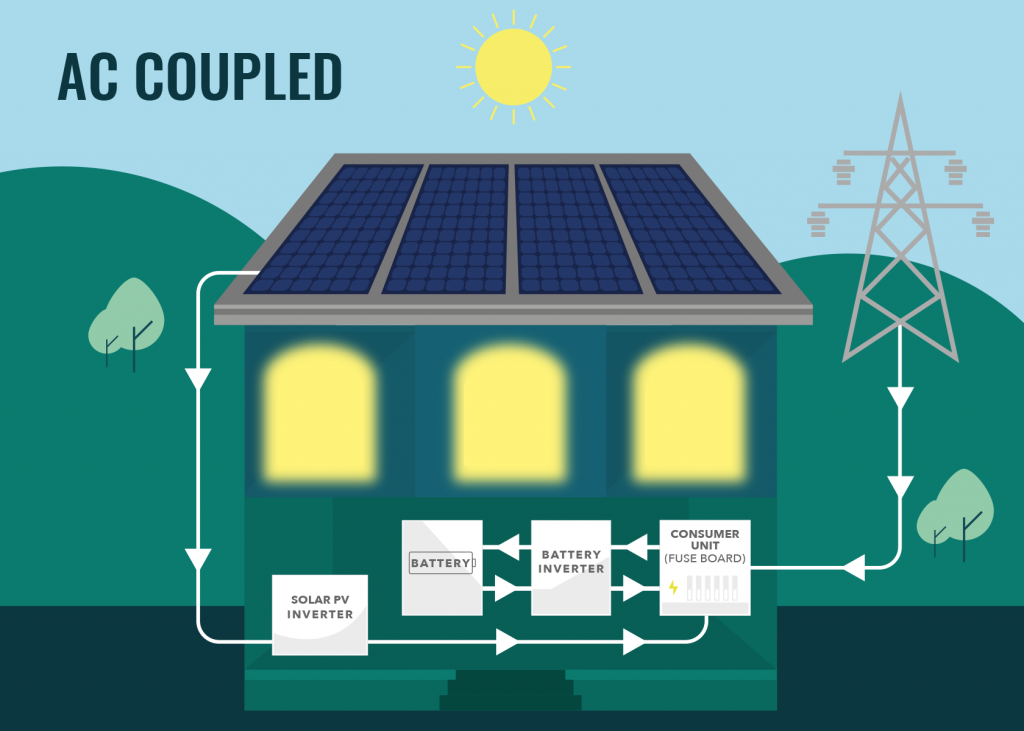
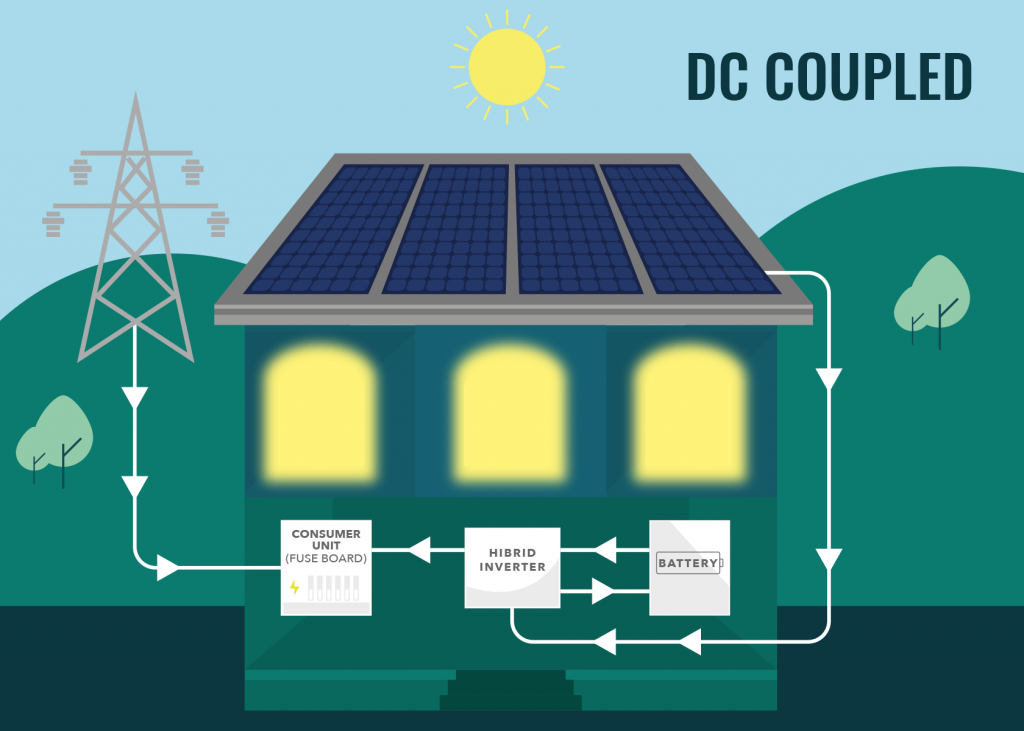
AC Coupled
Requires separate inverters for your battery and panels.
Pros
- More juice: you get the combined power from both the battery and solar inverters at the same time.
- Flexible location. As batteries are best at room temperature and inverters are best at cooler temperatures, it’s easier to optimise both because they don’t need to be near each other
- Battery faults won’t affect your Solar PV & vice versa
- Works with any Solar PV system
Cons
- 2-7% more power losses than DC
- More expensive as requires more than one inverter
- The combined power of the Solar & Battery inverters may exceed your grid connections DNO power limit.
DC Coupled
Battery and panels share the same inverter.
Pros
- More efficient power transfer than AC by up to 7%
- May be cheaper install as Solar & Battery share the same inverter
- Only one inverter so more likely to be able to make the most of your DNO (Distribution Network Operator) power limit.
Cons
- Limited access to power.
- Battery must be installed near the inverter. Batteries prefer temperatures around 20°C while inverters need to be in the cool, so there may be a trade off in efficiency
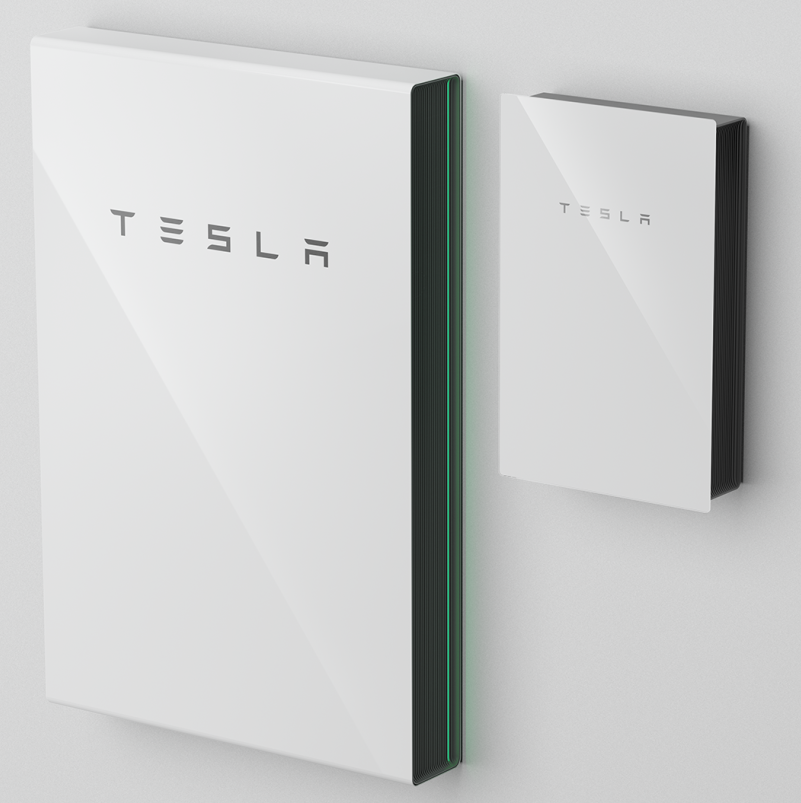
TESLA
The Powerwall has transformed Solar for good. And now, all Powerwalls come with Backup meaning you’ll have electricity even in a powercut.
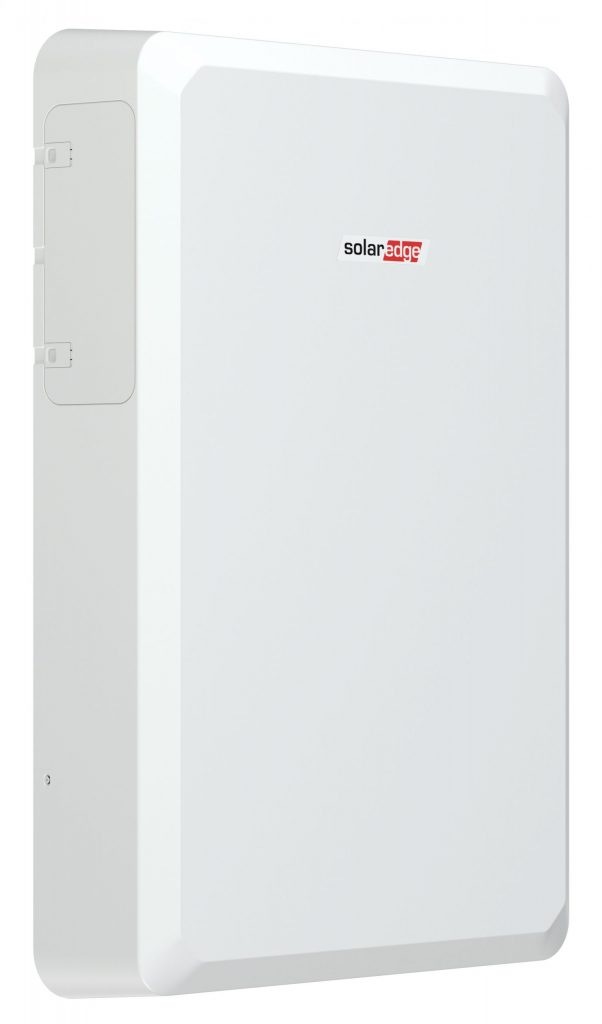
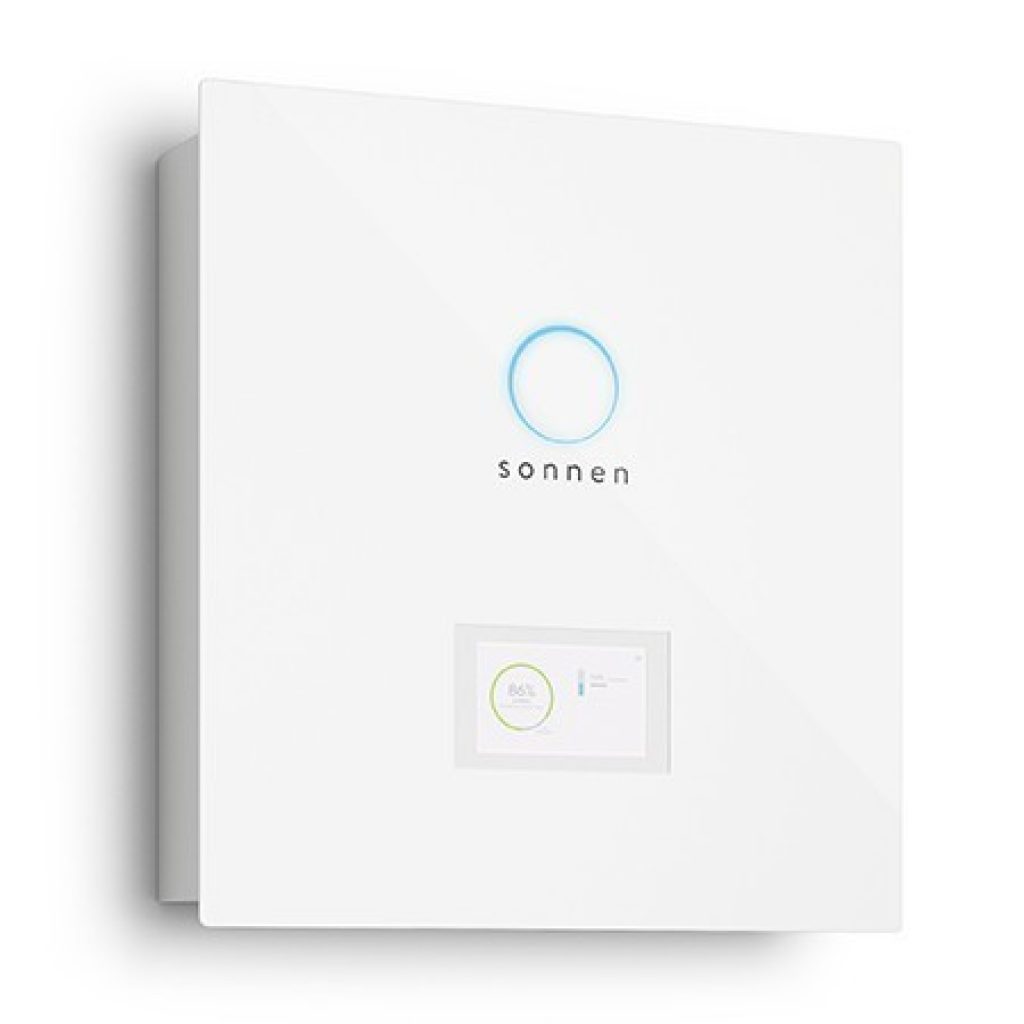
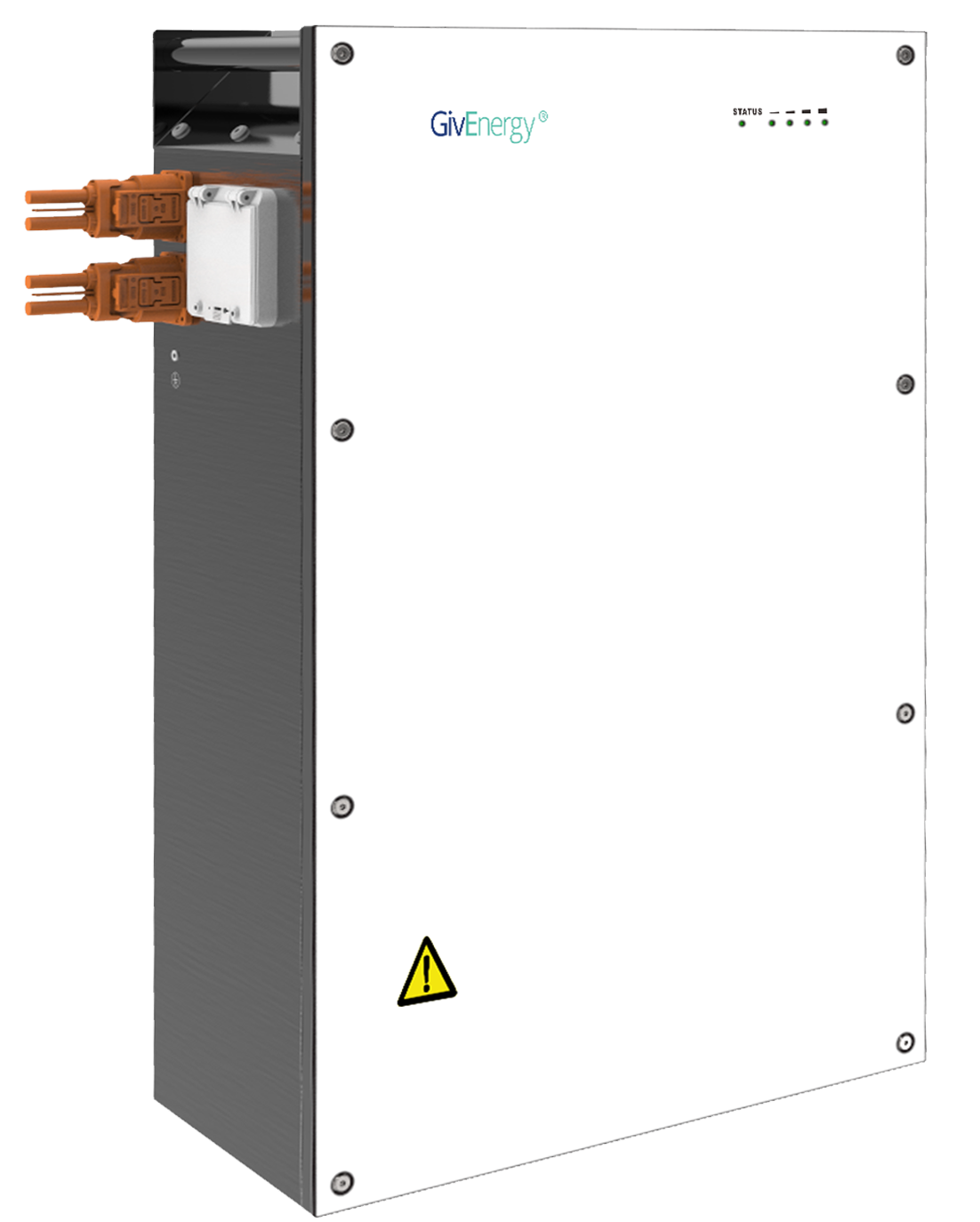
GIVENERGY
GivEnergy are a British Owned Battery Storage Manufacturer with manufacturing/Research and Development facilities in the UK, Ireland, Australia and Shenzhen China (Shenzhen Givenergy Technology Co., Ltd)
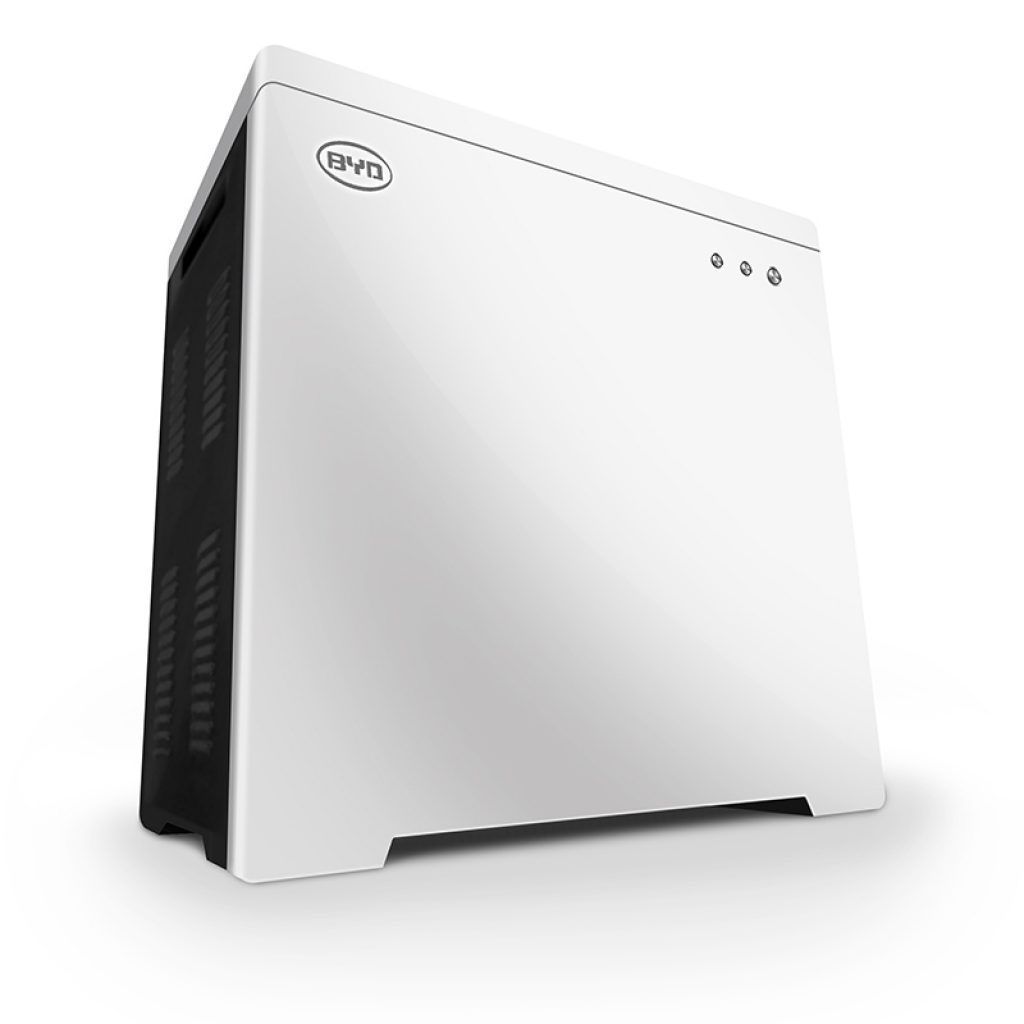
How Solar Batteries Help You Night & Day
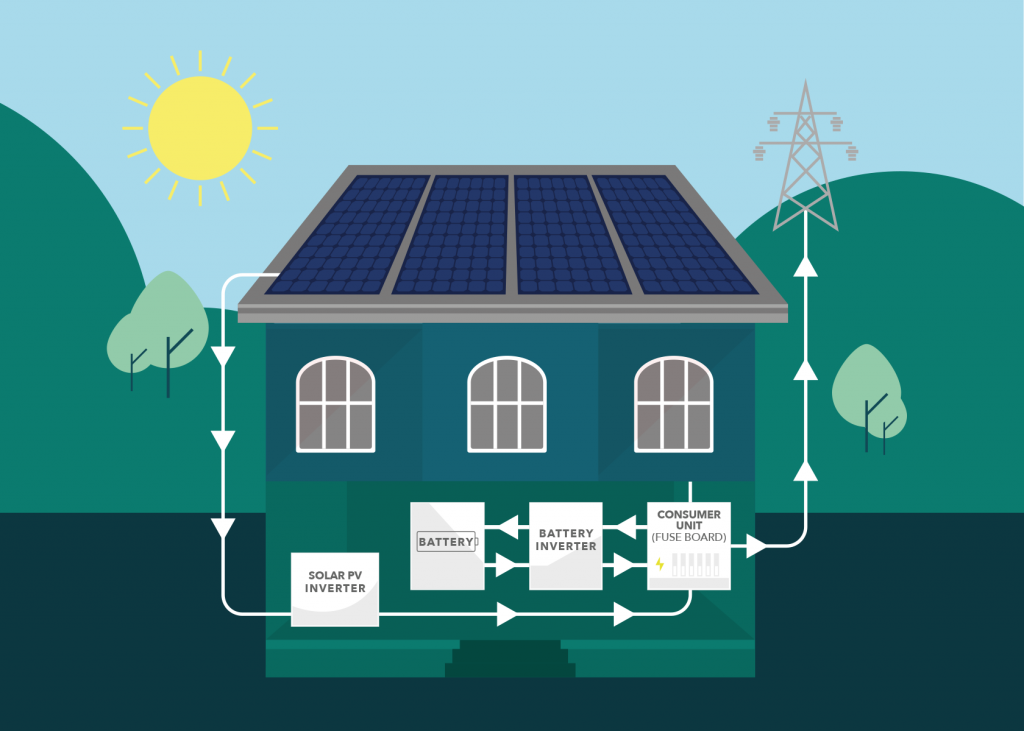
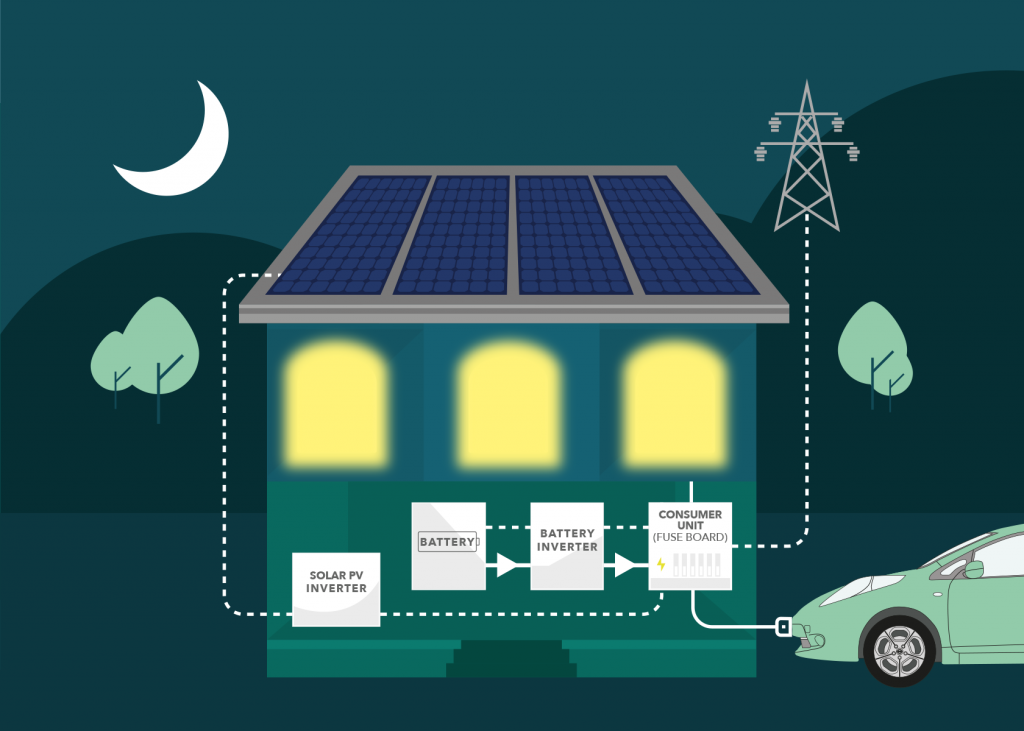
People often ask ‘Can solar panels work at night?’ The short answer is no. But with a battery, in effect they do. During the day, when solar panels are generating more power than your property is using, excess power is diverted to the battery for use later. When the sun goes down, or if you’re using more energy than your panels are providing, the battery will kick in to give you power and prevent drawing from the grid.